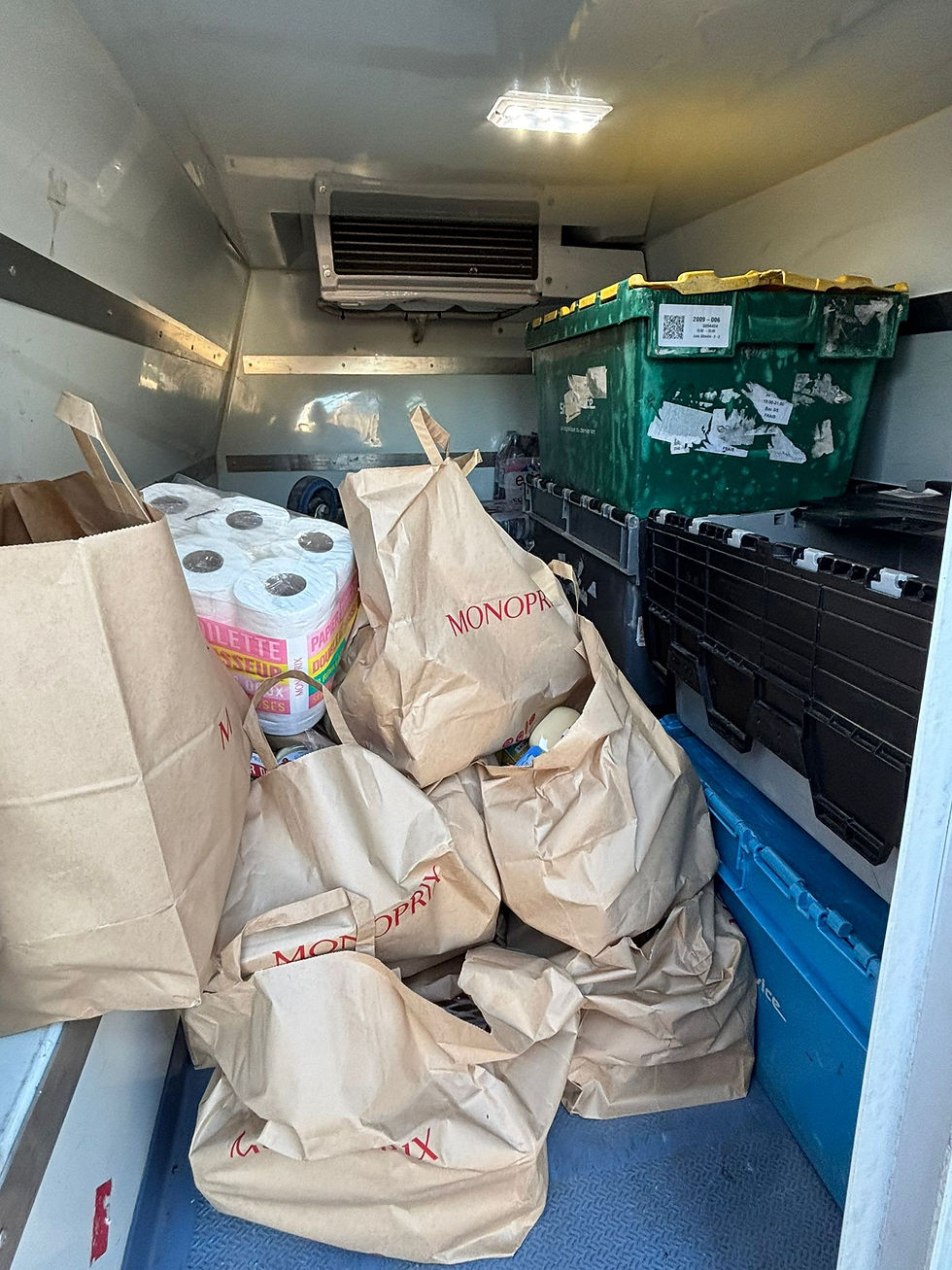Episode 15 - Boat provisioning
- Stéphane Mader
- Oct 2
- 3 min read
Updated: Oct 6
Special dedication! For the 10VP1 class of the Cugy EPS (primary and secondary school) and their teacher Christine Saupagna Isler
1925 - In the kitchen of the young sailors of 1925
In 1925, Bonita had no equipped galley on board, and it was in the forward cabin, called the station, that they had installed all their cooking equipment and hung their provisions.
They had embarked an enameled cast iron stove, which ran on kerosene, but which had to be started with methylated spirits! An operation that was not without risk, as Yvonne de Saussure had experienced to her cost. They had also taken a small, lightweight brass stove, so they could cook on deck in calm weather. The stoves were not gimbal-mounted, as is done today, and the helmswoman had to warn the cook to avoid knocking over the pans when changing tacks.
They used tall pots, with their kettle as a lid, which allowed them to heat water while cooking food. They did, however, bring a small pot, a steamer type, which was very practical in bad weather, with its screw-on lid that prevented it from tipping over, as well as a frying pan, an asbestos toaster, and a percolator coffee maker.
The water was contained in wooden crates, lined with zinc, to which they added a little bleach as a disinfectant. It was filled using demijohns (large glass bottles protected by wicker coverings) which they went to fill at the fountains in the ports.
Sometimes they had to take care of it in the evening and dressed as boys so as not to be bothered. Other times, they had to make several trips back and forth in a dinghy if the boat was anchored.
The dishes were washed on deck, in the bucket, which bore the name of a Roman emperor according to their dynasty. Before departure, several had already disappeared into the waves of the port of Marseille.

Their food was rather simple. For breakfast or snacks, large loaves of bread, stored in a wooden hutch, could last a good week, but because of the sea air, the slices had to be toasted to keep the bread edible. Butter was kept in a stoneware pot filled with water, which prevented it from spoiling in contact with the air, and everything was garnished with jams, marmalades, or honey.
Under Ella's influence, they had adopted the English breakfast, with porridge, bacon, and eggs, which, packaged by the dozen in an autoclave, could be stored for a long time and thus allowed them to make pancakes or omelets. The discovery of olive oil along the way made Genevan palates accustomed to butter or other more neutral oils squeak.
The main meals consisted of canned meat, fish, or vegetables (beans, peas, carrots), which they mixed with boiled potatoes or rice. They also took flours to make soups and plenty of unsweetened cocoa, tea, Banania coffee, and stock cubes for hot drinks, which they filled large thermoses with at night.
And, of course, big tins of sea salted crackers for seasickness, as well as fruit when they could find it and lots of dried fruit to snack on!
Carinne Bertola , based on Marthe Oulié “When I was a sailor” and Ella Maillart “The Vagabond of the Seas” or unpublished travel journals.
2025 – In the Galley of Today’s (Slightly Older) Sailors
Provisioning begins in Marseille at the supermarket. A race against time unfolds to gather everything before the dockside delivery deadline. The result is a receipt 83 cm long. The 72 bottles of 1.5 liters of water are much easier to manage than the bulky demijohns of the past.


Unknowingly, our food choices closely resemble what the girls consumed back then: one-pot meals available during navigation, consisting of potatoes, broth, lentils, chickpeas, vegetables, etc.
Avel Heol is spacious and offers plenty of storage. And if you can’t find something, just ask Yvonne! It’s probably stashed under her bed in the forward cabin—the largest storage space onboard.


The equipped kitchen area is clearly less dangerous than that of the Bonita:
As with many other aspects of sailing, technology has evolved, bringing greater comfort and safety. However, the tips for staying fit at sea remain the same. We prepare our thermoses of tea and broth. Various snacks, dried fruit, biscuits, and cereal bars allow everyone to nibble at their own pace and stay comfortable.
Small indulgences... our modern guilty pleasures: Dragibus, marshmallows, and other sweet junk. And let’s be honest—we love ending our days with a rum punch or a good gin and tonic.




Comments